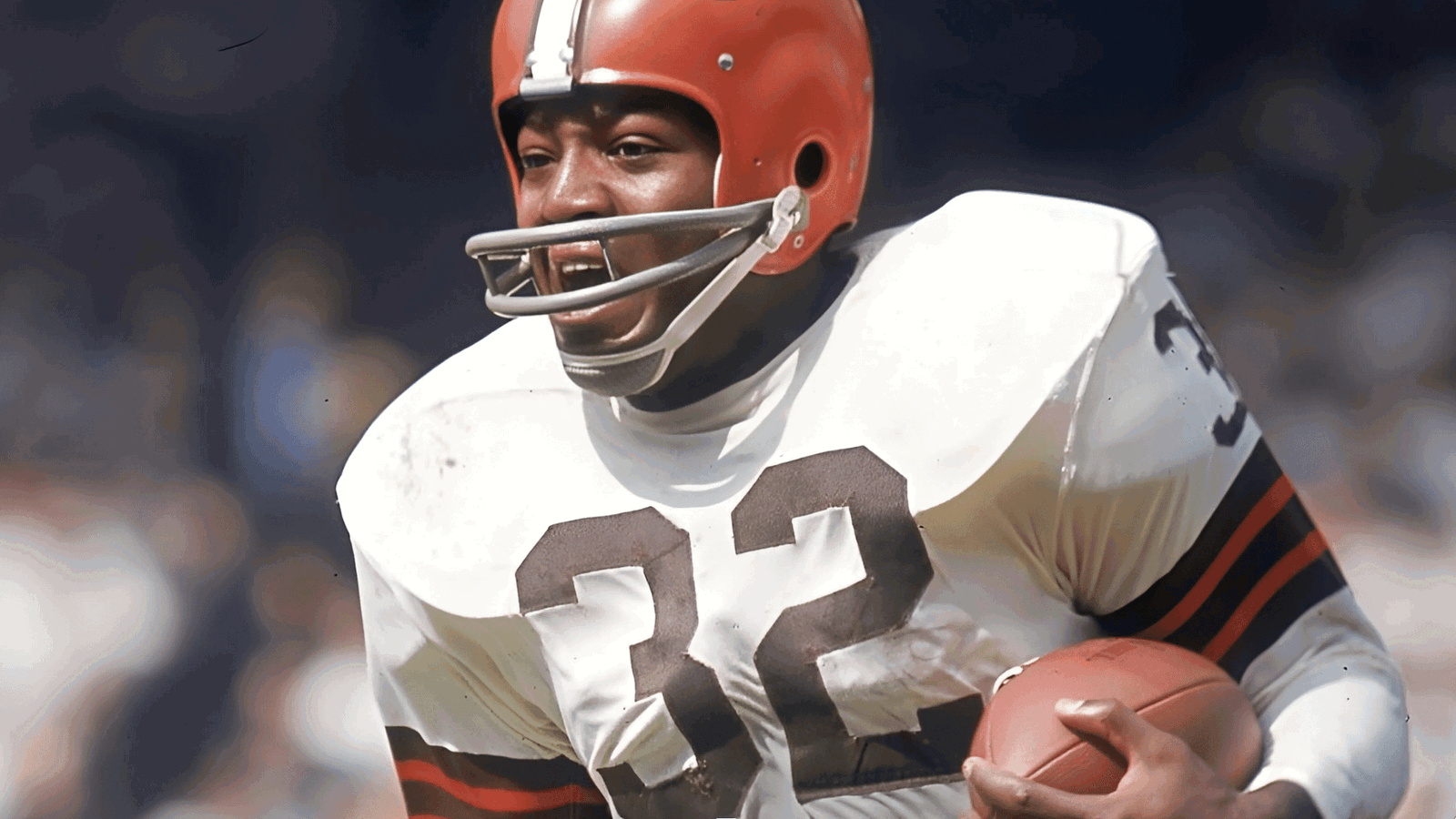Football fans often wonder about the pay of famous players like Jim Brown. Many think a top athlete from his time must have earned a lot.
But the truth about NFL salaries in the 1950s and 60s may catch you off guard. This post will show you what Jim Brown made while playing for the Cleveland Browns.
You’ll see how his pay compares to today’s NFL norms and why looking at the past matters when discussing player earnings.
We’ll examine Brown’s contracts, from his first year to his highest-paid season. You’ll also learn how NFL pay has changed and what affected player salaries in the past.
Get set for a surprising look at the money side of football’s past.
Overview of Jim Brown’s NFL Career
Jim Brown began his professional football journey in 1957 when the Cleveland Browns drafted him. His time in the NFL was short but packed with achievements. Brown played for nine years, all with the Browns.
During his career, Brown set some impressive records. He led the pack in rushing touchdowns and racked up more career rushing yards than anyone before him.
But what stands out is his yards-per-game average – no one else has matched it since.
Brown did something unusual for a star player. He stepped away from football at just 29 years old. Instead of staying on the field, he decided to try his hand at making movies.
This choice came as a surprise to many fans who thought he had more football left in him.
Breakdown of Jim Brown’s NFL Contracts
Here’s a detailed breakdown of Jim Brown’s NFL contracts. His salary progression highlights the growth from his initial rookie deal to his highest annual earnings during his career.
This helps put into perspective the financial journey of one of the greatest NFL players ever.
| Year | Contract Description | Annual Salary (in USD) |
|---|---|---|
| 1957 | He signed a rookie contract with the Cleveland Browns, earning $12,000 annually and an additional $3,000 signing bonus. | 12,000 + $3,000 bonus |
| 1958-1962 | As Brown continued to dominate the field, his salary increased steadily each year, reflecting his performance and league-leading stats. | Gradual increase (exact figures vary) |
| 1963-1965 | By the time Brown reached the peak of his career, his annual salary had reached $50,000, placing him among the highest-paid NFL players of the 1960s. | 50,000 |
Jim Brown’s Estimated Career Earnings in the NFL

Over his nine seasons in the NFL, Jim Brown earned from salary and bonuses. While we don’t have an exact total, we can make a good guess based on what we know.
Brown’s pay grew over time, starting with his $12,000 rookie salary and ending with his peak of $50,000.
If we factor in yearly increases and possible bonuses, his total earnings likely fell between $200,000 and $300,000 for his entire career.
Now, let’s put this in context. Brown was one of the top earners of his time, but even his pay seems small compared to today’s standards. The average player in the 1960s might have made $25,000 a year.
So Brown, at his peak, was making about twice the average.
Top stars like Brown stood out on the field and in their earnings. Yet, compared to other jobs, even average NFL pay was good.
It’s a far cry from today’s multi-million dollar contracts, but it was solid money for the era.
Comparison to Modern NFL Running Back Salaries
The difference is huge when we look at Jim Brown’s earnings, which are next to what today’s NFL stars make. Brown’s top salary of $50,000 might sound like pocket change to modern players.
For example, some of the best backs today can make $10 million yearly—about 200 times what Brown earned at his peak!
Even rookies now often start with contracts worth more than Brown made in his whole career.
Over the years, NFL pay has grown a lot. In the 1970s and 80s, salaries started to climb. By the 1990s, million-dollar contracts were common. Today, it’s not rare to see deals worth tens of millions.
Why such a big change? A few things played a part:
- The NFL became more popular, bringing in more money.
- Players formed stronger unions to fight for better pay.
- Free agency gave players more power to choose teams and ask for more money.
- TV deals pumped a lot more cash into the sport.
Brown’s pay might seem small now, but he was a top earner for his time. The growth in player salaries shows how much the football business has changed since Brown’s days.
Jim Brown’s Post-Retirement Income and Media Career
1. From Football Field to Big Screen
After hanging up his cleats, Jim Brown stepped onto a new stage – the movie set. He started acting in big films, which added a nice chunk to his income.
Brown appeared in movies like “The Dirty Dozen” and “100 Rifles,” showing he could tackle Hollywood roles and opposing players.
His move to acting wasn’t just a hobby. It became a real second career. While we don’t know exactly how much he made from each film, being in major movies likely paid well.
This career move helped Brown earn long after his football days.
2. Business Ventures Beyond the End Zone
While still playing, Brown was smart about making money off the field. He worked as a marketing representative for Pepsi, showing his business skills alongside his football skills.
This job gave him extra income and set him up for life after football.
After retiring, Brown didn’t stop at acting. He tried his hand at different business ventures. While we don’t have all the details, Brown clearly understood the value of having multiple income streams.
His work with Pepsi was just the start of a varied business career that helped him build wealth beyond what he earned in the NFL.
Jim Brown’s Latest Net Worth

Pinning Jim Brown’s net worth is tough, but we can make some good guesses. When he left the NFL in 1965, his savings were likely in the low six figures.
But Brown didn’t stop there. His work in movies, business deals, and ongoing football ties helped grow his wealth. Recent guesses put his net worth at about $50 million.
This big jump from his playing days shows how well Brown used his fame after football. While these numbers might not be perfect, they show that Brown turned his on-field success into long-term money smarts.
Wrapping It Up
Jim Brown’s NFL earnings might seem small by today’s standards, but they tell a bigger story.
We’ve seen how his $12,000 rookie salary grew to $50,000 at his peak and how he smartly built on that after leaving football.
What can we learn from this? First, it shows how much the NFL has changed. Today’s players earn millions, but Brown was a top earner in his time.
Second, it proves that success isn’t just about your paycheck. Brown used his fame and skills to build wealth long after retiring.
This look at Brown’s finances gives football fans a new way to appreciate his impact. It’s not just about his amazing stats but also how he navigated the business of sports.
What do you think about how player pay has changed since Brown’s day?




















